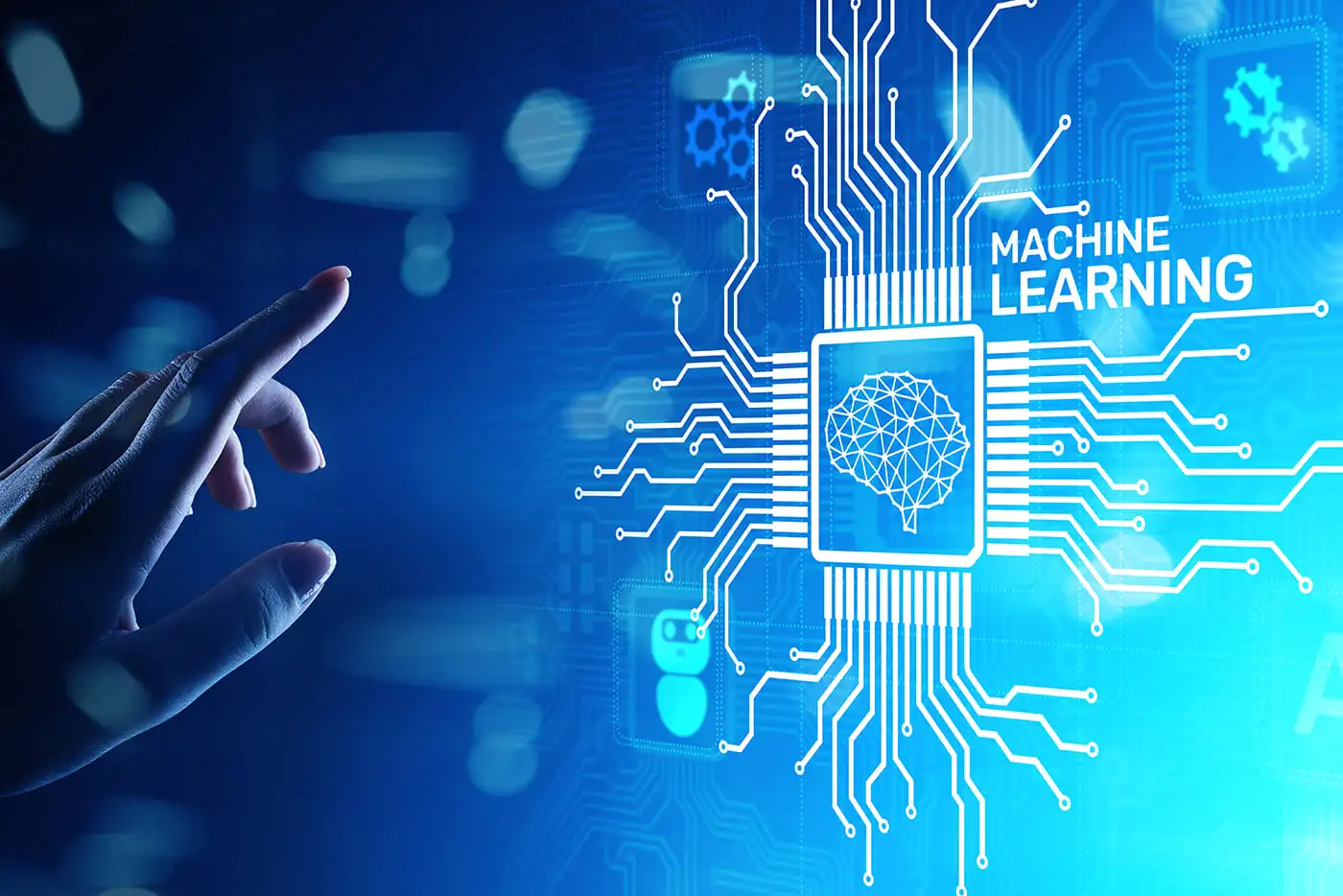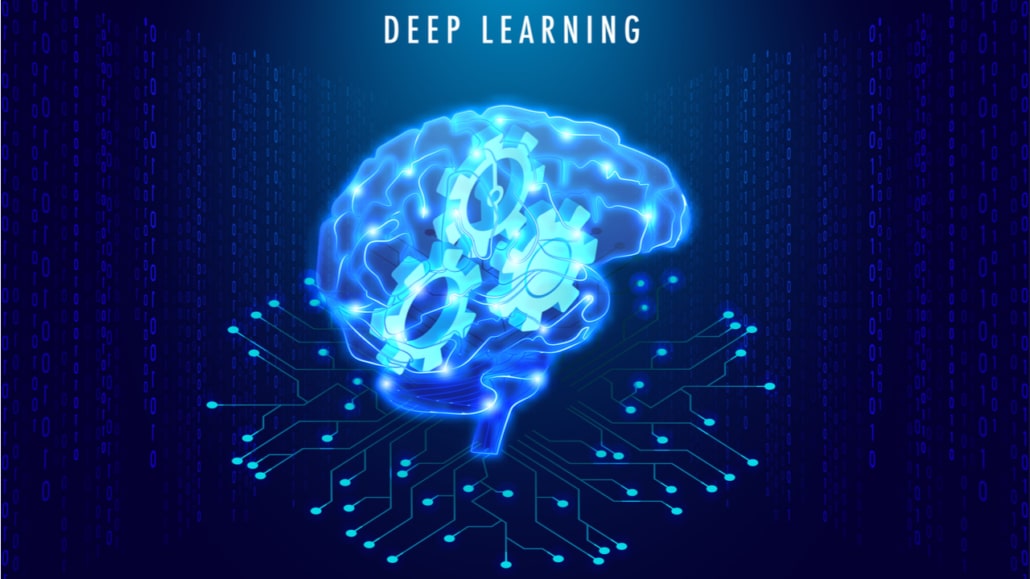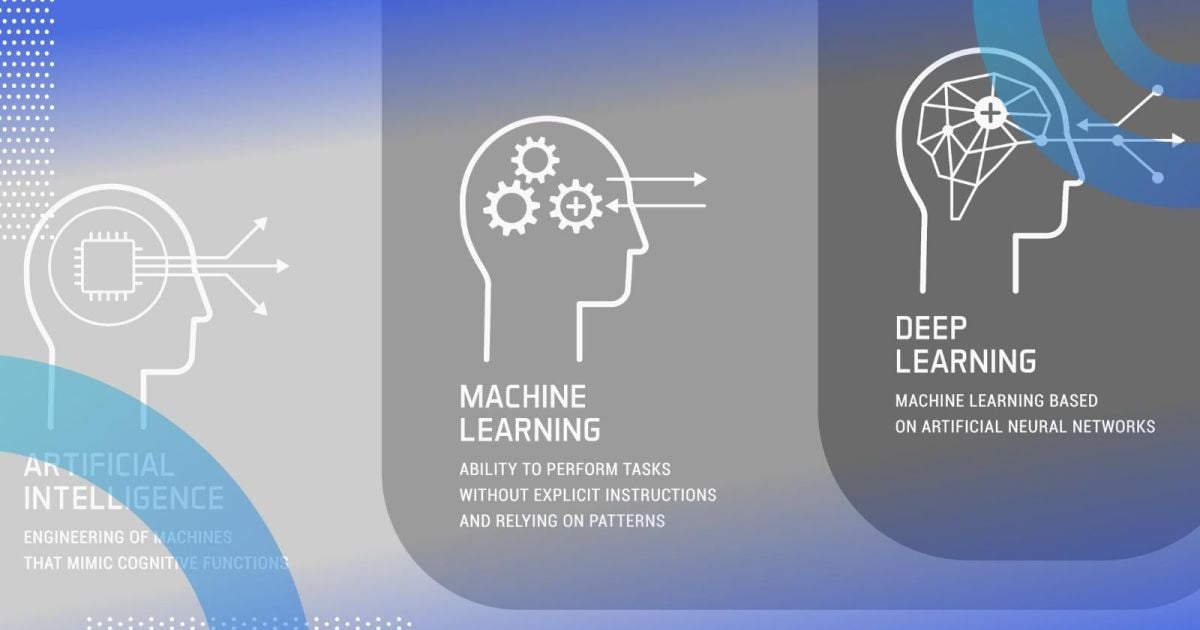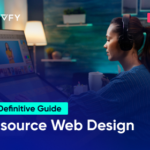Discover Artificial Intelligence vs. Machine Learning vs. Deep Learning
- TECHVIFY Team
- 0 Comments
The terms “Artificial Intelligence vs. Machine Learning vs. Deep Learning” have become widely used in the constantly changing world of technology. However, pinning their exact distinctions and meanings can occasionally be challenging. This article aims to demystify these concepts, comprehensively understanding their characteristics and applications. We’ll define each domain and look at what makes it unique. Real-world instances will demonstrate their practical applicability. By the end, you’ll clearly understand AI vs ML vs DL and how they affect our digital environment.
I. Define Artificial Intelligence vs. Machine Learning vs. Deep Learning
1. What Is Artificial Intelligence?
Artificial intelligence, commonly called AI, is a field within computer science that aims to make machines that can perform previously only humanly possible tasks. These skills include making decisions, comprehending communication, and recognizing patterns. AI encompasses many technologies, including NLP, deep learning, and machine learning.
2. What Is Machine Learning?
Machine learning, also known as ML, is a type of AI focusing on creating statistical models and algorithms that let computers learn from data without being programmed, allowing them to perform better at a given task. Machine learning systems are made to identify patterns in data, evaluate and understand it, and use that information to inform decisions and forecasts.
3. What Is Deep Learning?
Deep learning, shortened to DL, is a subfield of ML inspired by the human brain’s structure and function. It focuses on using artificial neural networks to model and solve complex tasks. What sets deep learning apart from traditional ML is the use of deep neural networks, which are neural networks with multiple layers (hence the term “deep”). Deep learning is vital in advancing various AI applications that enhance how systems and tools provide services, such as voice-activated technology and identifying credit card fraud.
Learn More On:
II. Difference Between AI and Machine Learning and Deep Learning
1. Approach and Learning
Both data-driven and rule-based AI systems are possible. AI can use machine learning techniques in addition to explicitly programmed knowledge. AI stands out by its emphasis on developing intelligent systems.
On the other hand, ML heavily relies on learning from data. Machine learning algorithms can analyze big datasets to find patterns, generate predictions, and continuously enhance model performance. Although ML includes many different learning methods, its data-centric methodology is its main characteristic.
Deep neural networks are used in DL, a subfield of machine learning, to automate feature extraction and representation from data. It uses these deep networks to learn and decide on its own. Deep learning systems are excellent at recognizing intricate patterns in data.
2. Dependency on Data
Applications of AI may or may not use data. Expert systems can function using knowledge and predefined rules. However, machine learning-based AI systems rely on data for model training and decision-making.
Data is ML’s primary data source. Machine learning models are very dependent on the type and quantity of data. A lack of pertinent data can hamper the performance of ML.
Deep learning is even heavier on data due to its deep neural networks. These networks’ depth makes them appropriate for use in applications involving massive datasets because they require a significant amount of data for efficient training.
3. Complexity and Use Cases
AI can range from simple rule-based systems to complex cognitive AI with natural language processing and reasoning capabilities. Its numerous applications include recommendation engines, driverless cars, and virtual assistants.
Despite being moderately complicated, machine learning has several uses. Predictive analytics, fraud detection, image and speech recognition, and many other fields use it. ML’s flexibility and adaptability enable a wide range of applications.
Being highly complex, DL excels in specific applications requiring intricate pattern recognition. Image & speech recognition, natural language understanding, and video game playing are common use cases.
4. Transformability
Because machine learning (ML) is a widely utilized approach in AI applications, the terms “AI” and “ML” are frequently used interchangeably in ordinary speech. However, in a technical context, the two phrases have different meanings.
Similarly, “ML” and “DL” have similarities but differ. Deep learning is a subgroup of machine learning that emphasizes using deep neural networks more than machine learning.
5. Human-Like Education
The goal of AI is to mimic human intelligence. To do this, it might or might not use machine learning techniques.
ML and DL aim to simulate learning procedures that are more like what occurs to humans. While DL, with its deep neural networks, focuses explicitly on attaining human-like Learning, ML is a link between AI and DL.
III. AI vs. Machine Learning vs. Deep Learning Examples
AI, ML, and DL are interconnected fields in computer science and technology. As the broadest category, AI encompasses ML and DL, subsets designed to mimic and augment human intelligence.
| Recommendation Systems | One prime example of these technologies in action is within recommendation systems. Services like Netflix and Amazon employ AI to recommend movies, TV shows, and products to users based on their viewing or purchase history. This AI-driven system utilizes ML to suggest items, services, or content by analyzing user preferences and behavior. Deep Learning, a subset of ML, comes into play when these platforms employ intricate neural networks to refine and enhance recommendations, fine-tuning the selections for individual users based on their extensive viewing or buying history. |
| Natural Language Processing (NLP) | In natural language processing (NLP), AI plays a crucial role through virtual assistants such as Siri and Google Assistant, which leverage AI to comprehend and respond to user queries. These AI-driven systems, in turn, use ML to improve their understanding of user language and provide more accurate responses. Deep Learning, with models like BERT, takes NLP to the next level by allowing systems to grasp the syntax and semantics of text in a more sophisticated manner. |
| Image Classification | In image classification, AI is used in security monitoring systems to identify suspicious individuals or objects. Machine Learning is applied in online facial recognition applications, which use trained models to identify and label faces accurately. Deep Learning takes image classification a step further with deep neural networks like ResNet, which can precisely categorize images. |
| Autonomous Driving | Autonomous driving provides another compelling example. AI is the overarching technology enabling self-driving cars to control and manage various driving tasks autonomously. Machine Learning enhances the vehicle’s recognition and decision-making capabilities, incorporating data and refining its understanding of the environment. Deep Learning, particularly Convolutional Neural Networks (CNN), assists self-driving vehicles in detecting and recognizing objects and obstacles on the road with high accuracy. |
Conclusion
In conclusion, Artificial Intelligence vs. Machine Learning vs. Deep Learning represents an order of increasing complexity in technology. While DL, a subset of ML, excels in complicated pattern recognition as demonstrated in image classification and natural language processing, ML relies on data-driven learning for jobs like recommendation systems. These distinctions define their functions based on their methods, dependencies on data, complexity, and applications.
If you’re interested in exploring AI projects related to Machine Learning (ML) and Deep Learning (DL), TECHVIFY is well-equipped to undertake such endeavors. Our team has the expertise and experience to develop innovative solutions leveraging these technologies to address your needs. Whether creating a recommendation system, implementing natural language processing for text analysis, image recognition, and classification, or any other AI-related project, TECHVIFY can tailor its services to meet your requirements. Our commitment to delivering cutting-edge AI solutions ensures that projects will benefit from the latest advancements in the field.
Contact us today to explore the possibilities and take your project to the next level!
TECHVIFY – Global AI & Software Solution Company
From Startups to Industry Leaders: TECHVIFY prioritizes results, not just deliverables. Accelerate your time to market and see ROI early with high-performing teams, AI (including GenAI) Software Solutions, and ODC (Offshore Development Center) services.
- Email: [email protected]
- Phone: (+84)24.77762.666








